Durbach Block Jaggers Architects
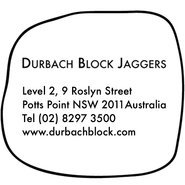
The three directors of Durbach Block Jaggers are Neil Durbach, Camilla Block and David Jaggers. We are a permanent team of eight who have worked together for over ten years. We are a practice committed to search for the possibilities of architecture itself ‘ its power and poetry; its pleasure and necessity. Our team is involved in every aspect of every project from inception to completion. We work seamlessly across design, from conceptual framing to the forging of meaning, form and materiality. Our work is recognised as both iconic and innovative through international publications and awards.
Driving directions to Durbach Block Jaggers Architects on map
Durbach Block Jaggers Architects on Google Maps
Projects:
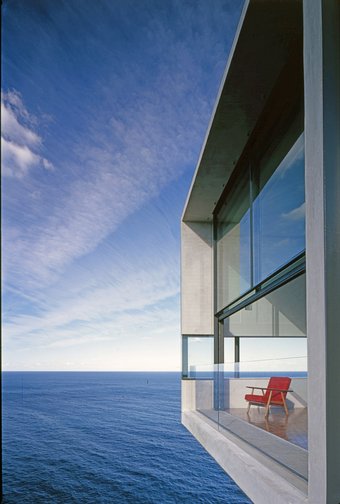
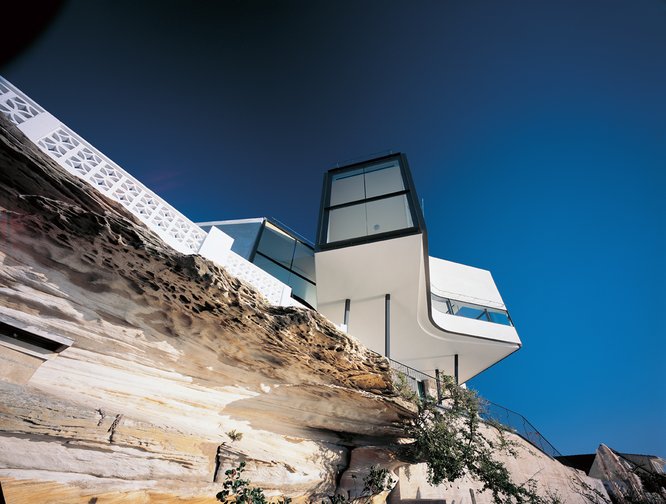

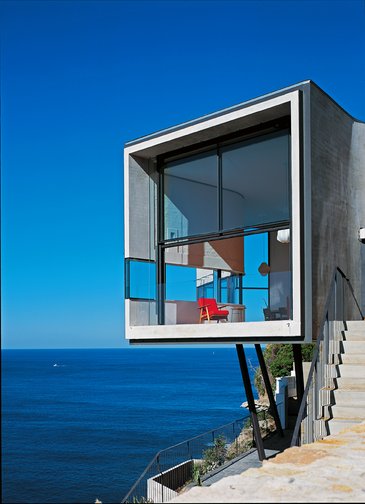
House Holman
Dover Heights, Sydney, 2004
Sited on the edge of a 70-metre high cliff, the plan of Holman House refers to Picasso’s painting The Bather. It contains a complex series of fluid living spaces set within a meandering perimeter that arcs, folds and stretches in response to sun, landscape and views. Living and dining areas cantilever out over the ocean, allowing dramatic views up and down the coast. The lower floor forms a base that is built from rough stone walls like an extension of the cliff below. These walls continue along the cliff edge to form a series of eccentric terraced gardens and a vase-shaped rock pool.
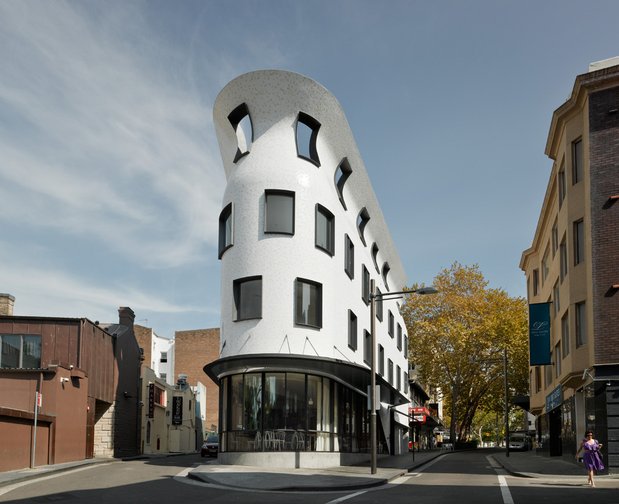
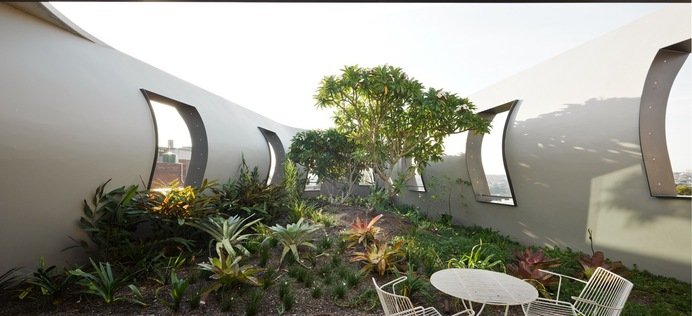
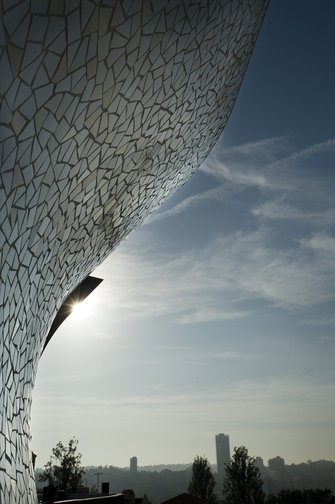
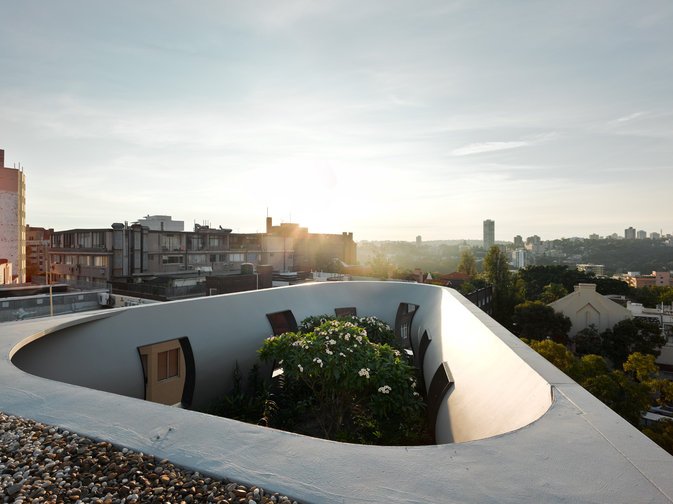
Roslyn Street Bar/Restaurant
Kings Cross, 2009
5-9 Roslyn Street Potts Point is a triangular shaped site, less than 200m2 in size. The rounded end looks directly onto a small public space. The shape of the site exaggerates perspective, the tiny footprint amplifies the perception of height. We wanted the building to sit easily in its place, to recognise the architectural traits of its neighbours. We also wanted to take a new view of the thick masonry walls, small detailed windows and overhanging cornices typical of the area. The cornice is exaggerated to overhang the street, to suggest a room. The fine steel lined windows are slightly offset and casually misaligned. The awning splits to mark individual entry points on the street. On the street, it seems an ephemeral version of the neighbourhood buildings, the rhythm held by the openings as the wall recedes. Then, at the corner the building shifts to being strongly surfaced, curving in two directions, becoming a peninsular of moulded light. The surface of crackled tiles, a mixture of gloss and matt, white and biscuit, reflect and refract the surroundings. An exotic roof top garden of frangipani trees and seasonal plantings is framed in the sky through buckled openings.
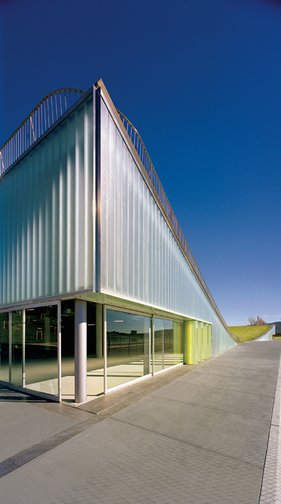
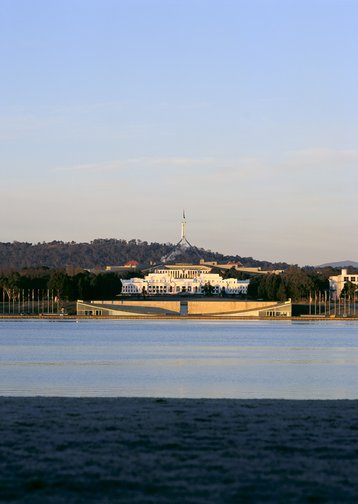
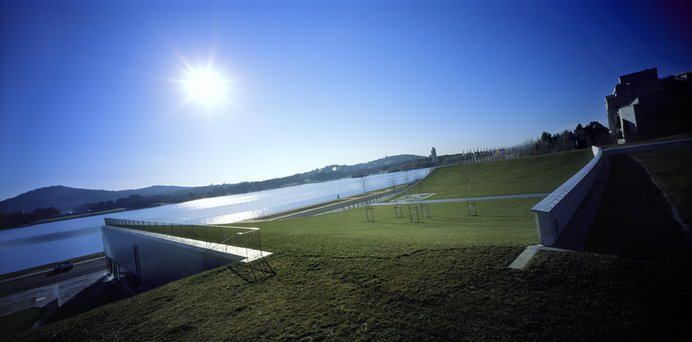
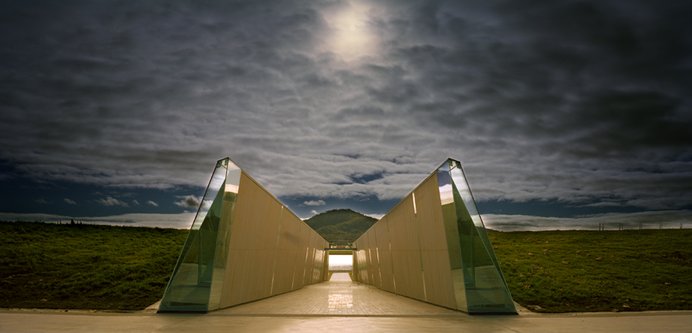
Commonwealth Place
Canberra, ACT, 2002
Commonwealth Place is a public gathering space, restaurant and cafe as well as offices and an exhibition space. Located in the centre of Griffins heritage axis, at the edge of Lake Burley Griffin, Commonwealth Place negotiates the built set pieces and landscape elements of this sacred space to provide a gathering space of collection and openness. The habitable spaces were designed to lead directly to the waterfront plaza, enlivening the lake edge. Always home to people in motion, the caf’ and gallery encourage people to stop and see where the land axis meets the lake edge.




